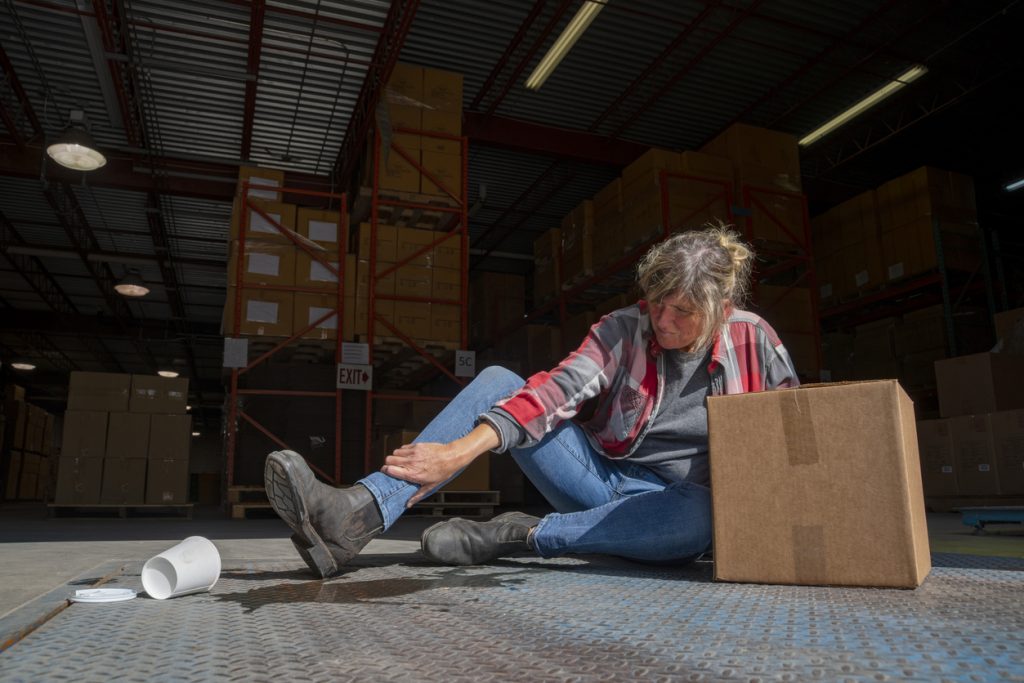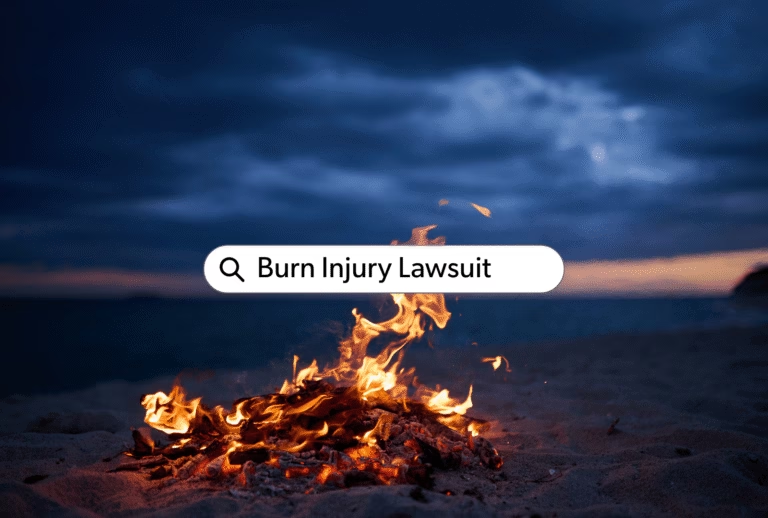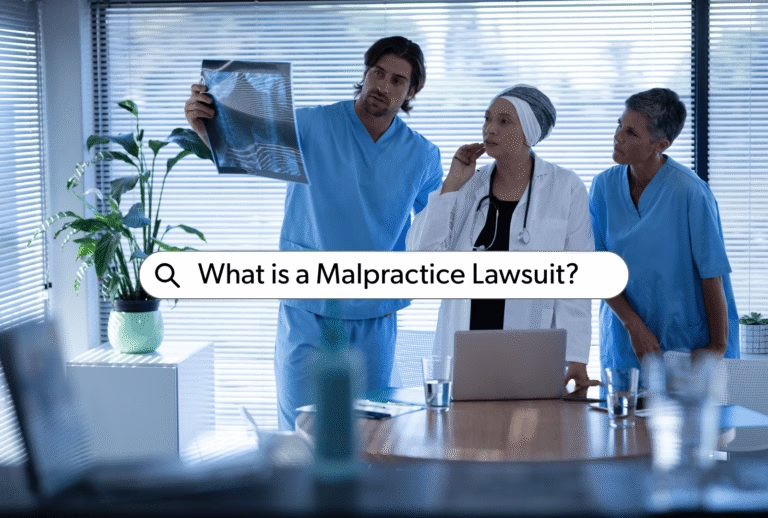Slip and fall accidents are among the most common personal injury claims in California. A slip and fall accident can often result from hazardous conditions on another person’s property.

Premises Liability in California
In California, slip and fall claims fall under premises liability law, which holds property owners responsible for maintaining safe conditions. Under Civil Code Section 1714, property owners owe a duty of care to individuals on their property. This means they must:
- Inspect their property regularly.
- Address or warn about dangerous conditions in a timely manner.
If a slip and fall occurs due to a hazardous condition, the injured party may pursue a slip and fall lawsuit by proving that the property owner failed to uphold their duty of care.
Common Causes of Slip and Fall Accidents
Slip and fall accidents often result from:
- Wet or slippery floors without warning signs.
- Uneven surfaces, such as cracked pavement or loose floorboards.
- Poor lighting that obscures hazards.
- Obstacles in walkways, such as cords or debris.
Proving Liability in Slip and Fall Cases
To succeed in a slip and fall claim, the injured party must establish that:
- A dangerous condition existed: The hazard must have been one that a reasonable person would recognize as unsafe.
- The property owner knew or should have known about the condition: This requires evidence that the owner failed to inspect or address the issue.
- The dangerous condition caused the injury: There must be a direct link between the hazard and the injury sustained.
Evidence such as photographs, surveillance footage, eyewitness accounts, and maintenance records is very important for proving liability.
Comparative Negligence in California
California follows a pure comparative negligence rule, meaning the injured party can recover compensation even if they are partially at fault. However, their compensation will be reduced by their percentage of fault. For example, if an injured party is found 20% responsible for the accident, they can still recover 80% of the total damages.
Compensation in Slip and Fall Claims
Victims of slip and fall accidents can pursue compensation for:
- Medical treatment: Including hospital bills, rehabilitation costs, and future medical needs.
- Lost wages: Reimbursement for time off work or loss of earning capacity.
- Pain and suffering: Compensation for physical pain and emotional distress.
- Punitive damages: In rare cases, courts may award punitive damages if the property owner’s negligence was particularly egregious.
Statute of Limitations
In California, the statute of limitations for personal injury claims, including slip and fall accidents, is two years from the date of the injury. If the accident occurred on government property, the victim must file a claim within six months.
Steps to Take After a Slip and Fall
- Seek medical attention immediately to document injuries.
- Report the incident to the property owner or manager.
- Document the scene by taking photos and gathering evidence.
- Consult a slip and fall lawyer to evaluate your claim and guide you through the legal process, including making an insurance claim, if needed.
Read More
What to do after a slip and fall accident?
How do you prove negligence in a slip and fall?
Statute of limitations at for slip and falls
How To Handle A Slip and Fall Accident
Slip and fall injuries can lead to significant medical expenses, lost wages, and emotional distress. To recover compensation in California, an injured party must satisfy specific legal elements to prove their claim.
1. Establishing Duty of Care
As aforementioned, in California, property owners or managers owe a duty of care to ensure their premises are reasonably safe for visitors. This applies to private businesses, residential properties, and public spaces. However, the extent of the duty depends on the nature of the property and the visitor’s status:
- Invitees: Customers or business patrons are owed the highest duty of care. Property owners must inspect for hazards and address them promptly.
- Licensees: Social guests are also owed a duty of care but not to the same level as invitees.
- Trespassers: Property owners generally owe limited duties to trespassers, except in specific circumstances, such as when a child is involved.
2. Proving a Dangerous Condition
The injured party must demonstrate that a hazardous condition existed on the property.
The hazard must be one that a reasonable property owner would recognize as dangerous. A minor inconvenience, like a slightly uneven floor that is not inherently dangerous, may not meet this threshold.
3. Actual or Constructive Knowledge of the Hazard
To hold a property owner liable, it must be shown that they:
- Knew about the hazardous condition (actual knowledge), or
- Should have known about it through reasonable inspection and maintenance (constructive knowledge).
For instance, if a store employee noticed a spill but failed to clean it or warn customers, the owner may be liable. Evidence like surveillance footage, maintenance logs, or employee testimony can help establish this element.
4. Breach of Duty
The injured party must prove that the property owner breached their duty of care by failing to:
- Address the hazard within a reasonable timeframe.
- Provide adequate warnings, such as placing a “Wet Floor” sign.
- Inspect and maintain the property to prevent hazards.
California courts often consider whether a reasonable property owner would have acted similarly under the same circumstances.
6. Damages for Fall Accident Victims
Finally, the injured party must show they suffered measurable damages as a result of the slip and fall. These damages can include:
- Medical bills for treatment, rehabilitation, or future care.
- Lost wages or reduced earning capacity due to time off work or permanent injuries.
- Pain and suffering, including emotional distress caused by the accident.
Documented evidence, such as medical records, pay stubs, and expert testimony, is crucial for proving the extent of damages.
Steps to Strengthen a Slip and Fall Claim
To increase the chances of success:
- Document the scene: Take photographs or videos of the hazard and surroundings.
- Report the incident: Notify the property owner or manager immediately and file a formal report if possible.
- Seek medical attention: Prompt medical care not only addresses injuries but also provides essential documentation.
- Consult an attorney: A personal injury attorney can help navigate the complexities of the legal process, gather evidence, and negotiate a fair settlement.
Slip and Fall Damages
Slip and fall injuries can have severe physical, emotional, and financial impacts. If you’ve suffered such an injury in California due to a property owner’s negligence, you may be entitled to monetary compensation. California’s legal framework for premises liability allows injured individuals to seek a range of remedies to cover their losses. The help of an experienced personal injury lawyer can help victims receive fair compensation.
1. Economic Damages
Economic damages are designed to compensate for the tangible, out-of-pocket costs related to a slip and fall case. These damages are relatively straightforward to calculate, as they are based on the financial losses of an injured person.
Medical Expenses
One of the largest components of economic damages is reimbursement for medical bills incurred as a result of the injury. These expenses can include:
- Emergency room visits.
- Hospital stays.
- Surgery costs.
- Physical therapy or rehabilitation.
- Prescription medications.
- Future medical expenses, especially if the injury requires ongoing care.
For example, if you fractured your hip in a fall and require surgery, rehabilitation, and follow-up care, all these expenses could be included in a personal injury claim.
Lost Income and Earning Capacity
If your injury prevents you from working, you may be able to recover compensation for lost wages. Additionally, if the injury diminishes your ability to earn income in the future, you may be eligible for damages covering the long-term financial impact.
Property Damage
If your personal belongings, such as a smartphone or glasses, were damaged during the slip and fall, you could claim the cost of repair or replacement.
2. Non-Economic Damages
Non-economic damages compensate for intangible losses that are harder to quantify, but can still be important.
Pain and Suffering
Slip and fall injuries often result in physical pain and emotional distress. Pain and suffering damages aim to compensate for the physical discomfort and mental anguish caused by the injury.
Emotional Distress
Serious injuries can lead to psychological impacts such as anxiety, depression, or post-traumatic stress disorder (PTSD). California law allows for compensation for these emotional hardships.
Loss of Enjoyment of Life
If the injury impacts your ability to engage in hobbies, social activities, or other aspects of life you previously enjoyed, you may be entitled to damages for the reduced quality of life.
3. Punitive Damages
While rare in a slip and fall accident case, punitive damages for a fall accident lawsuit may be awarded if the property owner’s conduct was particularly reckless or egregious. This is meant to punish the defendant and deter similar behavior in the future.
For example, if a property owner knowingly ignored a dangerous condition for an extended period, putting others at risk, the court might award punitive damages.
4. Settlement vs. Trial Awards
Many slip and fall cases are resolved through settlements rather than going to trial, but with the help of a fall accident lawyer. Settlement amounts vary based on the severity of the injury, evidence of negligence, and the skill of your legal representation. However, if the case proceeds to trial, a jury could determine the award amount based on the presented evidence.
5. Statute of Limitations
In California, you must file a slip and fall claim within two years from the date of the injury. If the incident occurred on government property, a claim must be filed within six months, with strict procedural requirements.
What To Do After A Slip and Fall Accident? – FAQ
what to do after a slip and fall accident? Document the scene of the fall, obtain witness statements, report physical injuries to the owner of the property, and consider contacting a slip and fall attorney to decide the best course of action. Lawyers for Justice, PC offers a free consultation for those who sustain injuries.
what is the difference between slip trip and fall? A slip is when a victim slips on a wet floor or other surface, and a trip happens when a victim trips over an object. A fall is generally the result of a slip or trip.
How long does a slip and fall case take to settle? Many times, slip and fall cases in California are settled with an insurance company and and do not necessarily go to trial. However each case is different and depends on various circumstances.
do most slip and fall cases settle out of court? Usually, yes.
how are slip and fall settlements calculated? Slip and fall settlements are calculated by taking into consideration the severity of the victim’s injuries, how much is spent on recovery and treatment, lost wages, and pain and suffering, if applicable.
how many slip and fall cases go to trial? Each case is different, so exact numbers can fluctuate.
how much is a slip and fall case worth? Again, it depends on the case: how much money was spent on getting the victim well, how egregious the fall was (including any intent), etc.
who is liable in a slip and fall accident? It depends on the fall. The victim could be liable depending on how much fault (a percentage) is considered theirs.
should i get a lawyer for a slip and fall? It’s always a good idea to consult with an experienced attorney to explore legal options. They may be able to recover more economic losses than a victim could recover on their own.
can you sue for a slip and fall accident? A powerhouse law firm can guide you on your grounds to sue depending on the specifics of your case.
how do you win a slip and fall settlement? Having proof against the negligent party is the best way to win.
what is a slip and fall accident? An accident where a person slips and falls, usually on someone else’s property.
can i sue my employer for a slip and fall? How to sue for a slip fall? If it happens at work, you may be able to sue your employer based upon the specifics of the case.
can i sue my landlord for slip and fall? If there was negligence on the landlord’s behalf, then potentially yes.
common injuries from slip and fall? Traumatic brain injuries, spinal cord injuries, broken bones, and more.
Last Updated on September 12, 2025


